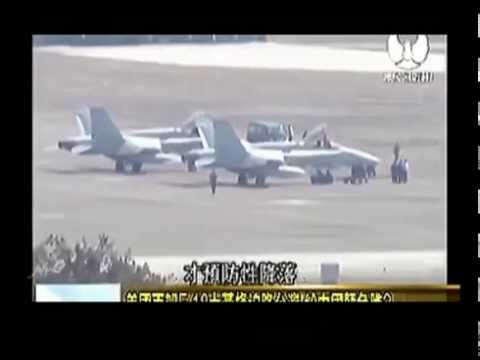F-22Raptor
ELITE MEMBER

- Joined
- Jun 19, 2014
- Messages
- 16,980
- Reaction score
- 3
- Country
- Location

A recent report from the Mitchell Institute for Aerospace Studies, written by Maj. Gen. Jeff Harrigian and Col. Max Marosko of the US Air Force, gives expert analysis and never before seen detail into how the US's fifth-generation aircraft would fare in a war with China.
The report starts with a broad overview of fifth-generation capabilities and their roles in the future of air combat, and it concludes with a hypothetical war in 2026 against an unnamed nemesis after "rising tensions in a key region abroad."
However, the locations mentioned in the scenario are all in the Western Pacific and clearly seem to indicate the rival is China, whose advanced radar and missile capabilities make for very interesting challenges to the US Air Force's force structure.
As the scenario takes place ten years in the future, it is assumed that all the kinks with integrating fifth generation fighters into the force have been ironed out, and that the F-35 and F-22 work seamlessly to aid legacy aircraft via datalink.
In the opening stanza of such a conflict, the Air Force officials say that the US would send its F-35s and F-22s to a wide range of bases across the Pacific, leveraging the US's vast network of bases and allies with some of the valuable warplanes.
Such a step denies China's ability to land a "knockout blow" as they normally could, because typically US jets stay stationed at larger bases, presenting a more attractive target. Also, by this time, the US's fifth-generation aircraft can find airfields on their own, without the help of air traffic controllers, allowing the force to be further spread out to present less target-rich areas.
Additionally, regional allies like Australia, who also fly the F-35, can quickly fill in for US airmen in a pinch. A US F-35 can land on an Australian airfield and receive much the same maintenance as it would at it's home base, the officials claim.
With the Pacific now a patchwork of small units of F-35s and F-22s, the Chinese would seek to leverage their impressive electronic warfare capabilities, but the officials contend that the fifth-gens would weather the storm.
"Heavy radar and communications jamming confront US and coalition forces, but fifth generation aircraft leverage their networked multi spectral sensors to detect and target enemy aircraft, while supporting a common operating picture through data links and communication architectures," the Air Force officials write.
Meanwhile, legacy platforms like F-16s, F-18s, and F-15s provide a critical layer of defense closer to the US mainland. China's formidable surface-to-air missile capabilities keep these older, more visible fighters off the front lines until the stealthier platforms, like the F-35, F-22, B-2, and the upcoming B-21 do their job.
The officials recognize the need for the fifth-gen fighters to strike quickly and get out of the heavily contested air spaces. Destruction of many of the US and allied airfields is expected, however the versatile fifth-gens continue to switch up locations as China depletes their supply of ballistic and cruise missiles on low-yield targets.
Many of China's SAM batteries are road mobile, so fifth-gen fighters will have to use their geo-location and electronic warfare capabilities to seek and destroy these sites.
The onboard sensors in the fifth-gens will provide vital leeway for the fighters to make decisions on the go.
From the report:
"Aircraft take off with minimal information—little more than a general target area that may be more than 1,000 miles away. On the way to target, the fifth generation aircraft receive minimal tanker, threat, and target information, but sufficient updates to enable them to ingress, identify, and prosecute targets successfully before returning to operating airfields."
Loses of US and allied airfields and troops would naturally follow in such a conflict, however the forces are integrated and use the same platforms, so they can quickly fill in for each other in the event of loses.
All the while, F-35s and F-22s whittle away at China's air defenses, gradually lowering the threat level from high to moderate. Eventually, the bulk of the US Air Force's fleet —legacy fighters— can operate in the area with acceptable rates of survivability.
And that's it. Once F-16s are flying over Beijing, the conflict is essentially settled. In the moderately contested airspace, fifth generation jets can essentially data-link with legacy fighters and use them as "armada planes," leveraging their increased capability to carry ordinance to eliminate whatever remains of China's air defenses.
http://www.businessinsider.com/f-22-f-35-in-a-war-against-china-2016-7








